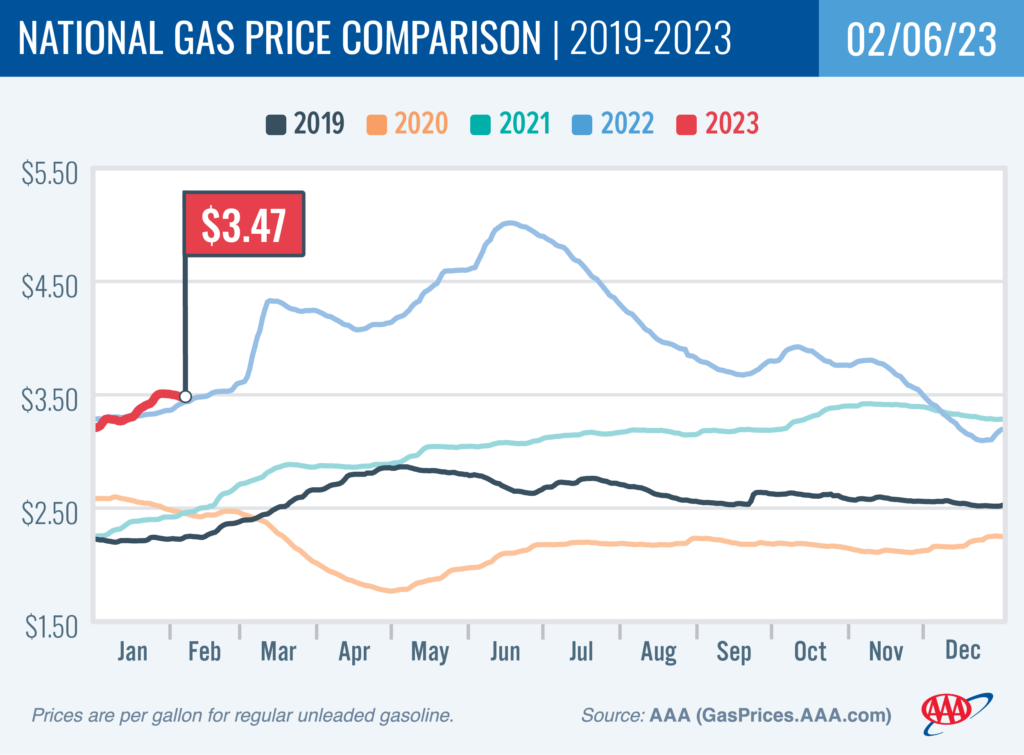WASHINGTON, D.C. — The national average for a gallon of gas barely budged over the past week, drifting lower by three cents to $3.47. Last week’s decision by OPEC+ to maintain current production levels and not make any cuts led to lower oil prices. But Friday’s blockbuster U.S. report of 517,000 jobs added in January, dropping the unemployment rate to a 54-year low of 3.4%, may have the opposite effect. Are recession fears fading, and could a healthier global economy lead to more demand for oil and higher prices?
“Keep an eye on the price of oil,” said Andrew Gross, AAA spokesperson, “because oil currently accounts for nearly 60% of what we pay at the pump. And rising or falling oil prices can have a direct impact on motorists’ wallets.”
According to data from the Energy Information Administration (EIA), gas demand rose from 8.14 million to 8.49 million b/d last week. Meanwhile, total domestic gasoline stocks increased by 2.6 million bbl to 234.6 million bbl. Despite rising gas demand, total supply growth has helped limit pump price increases.
Today’s national average of $3.47 is 18 cents more than a month ago and four cents more than a year ago.
Please note that the gas report is moving to Thursdays and will be posted by noon each week.

Quick Stats
- The nation’s top 10 largest weekly decreases: Delaware (−15 cents), Ohio (−12 cents), Maryland (−9 cents), South Carolina (−9 cents), Tennessee (−9 cents), Alabama (−8 cents), Michigan (−8 cents), Indiana (−8 cents), Florida (−8 cents) and Virginia (−7 cents).
- The nation’s top 10 least expensive markets: Texas ($3.08), Mississippi ($3.12), Oklahoma ($3.13), Missouri ($3.13), Kentucky ($3.14), Arkansas ($3.14), South Carolina ($3.17), Kansas ($3.18), Louisiana ($3.19) and Tennessee ($3.19).
Oil Market Dynamics
At the close of Friday’s formal trading session, WTI decreased by $2.49 to settle at $73.39. Crude prices fell last week amid ongoing market concerns that if a recession occurs this year, crude demand and prices would likely decline. Additionally, crude prices dropped after the EIA reported that total commercial stocks increased by 4.2 million bbl to 452.7 million bbl.
Drivers can find current gas prices along their route using the AAA TripTik Travel planner.
